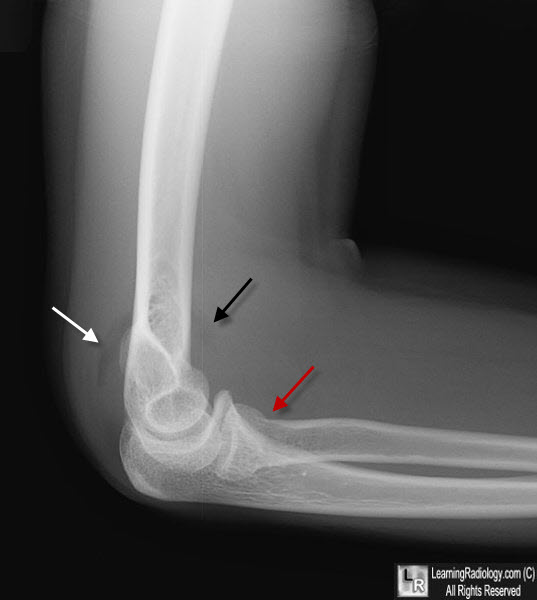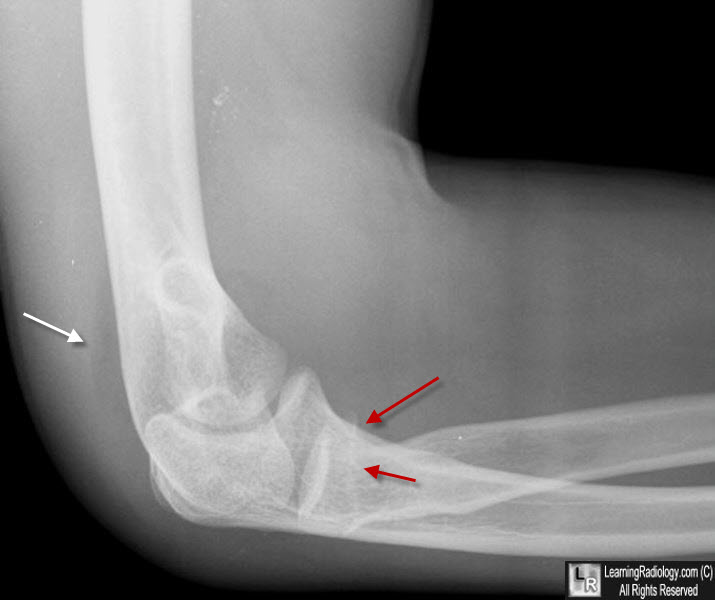|
|
Positive Fat Pad Sign - Elbow
Elbow Joint Effusion
General Considerations
- Posterior displacement of intra-articular, extrasynovial fat around the elbow joint by fluid in the joint
- The fat is normally invisible sitting within the olecranon fossa on a 90 degree flexed lateral view of the elbow on conventional radiography
- Frequently associated with intra-articular trauma but may be seen with arthritis or infection of the joint, such as rheumatoid arthritis, hemophilia and gout
- In children, the most common occult elbow fracture is a supracondylar fracture
- In adults, the most common occult fracture of the elbow is a radial head fracture
- An anterior fat pad is normal and extends parallel to the shaft of the humerus
Clinical Findings
- Pain
- Limitation of motion
- Swelling
Imaging Findings
- Visualization of the crescent of lucency at the posterior aspect of the distal humerus (positive posterior fat pad sign)
- Upward displacement of the anterior fat pad (positive anterior fat pad sign)

Positive Posterior Fat Pad. A lateral radiograph of the elbow shows a crescentric lucency projecting posterior to the distal humerus (white arrow) representing fat which has been displaced by an elbow joint effusion. Such effusions are frequently secondary to trauma and a subtle fracture of the neck of the radius is present (red arrow). The anterior fat pad (black arrow) which is usually visible normally is elevated upward by the joint effusion.

Positive Posterior Fat Pad. Another lateral radiograph of the elbow shows a crescentric lucency projecting posterior to the distal humerus (white arrow) representing fat which has been displaced by an elbow joint effusion. There is an impacted fracture of the neck of the radius (red arrow).
Signs in Imaging: The Fat Pad Sign. GK Guswami. Radiology 2002; 222:419–420
|
|
|